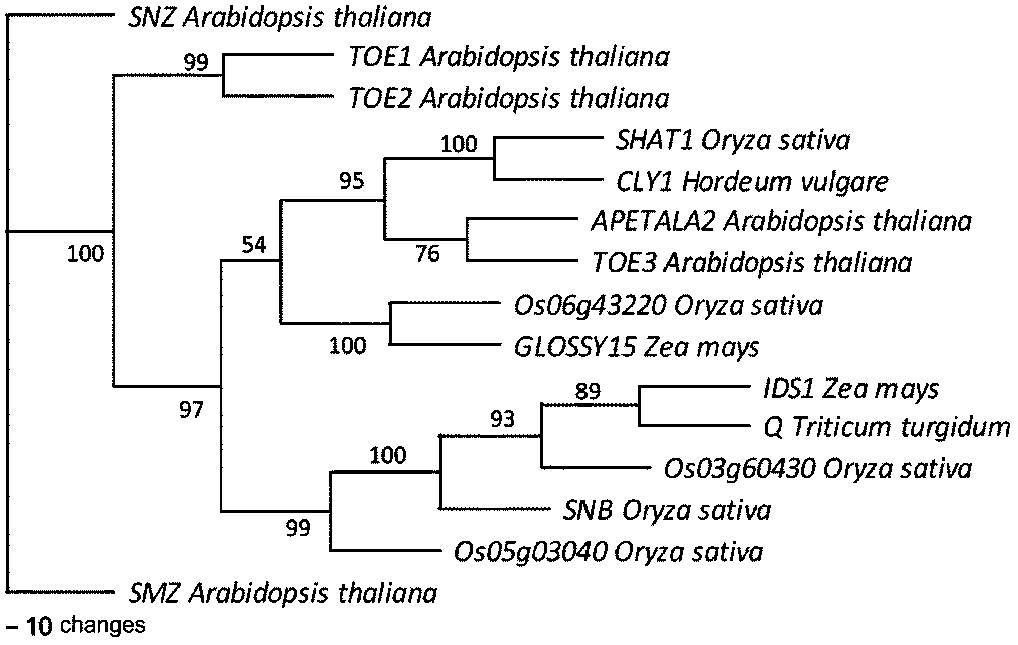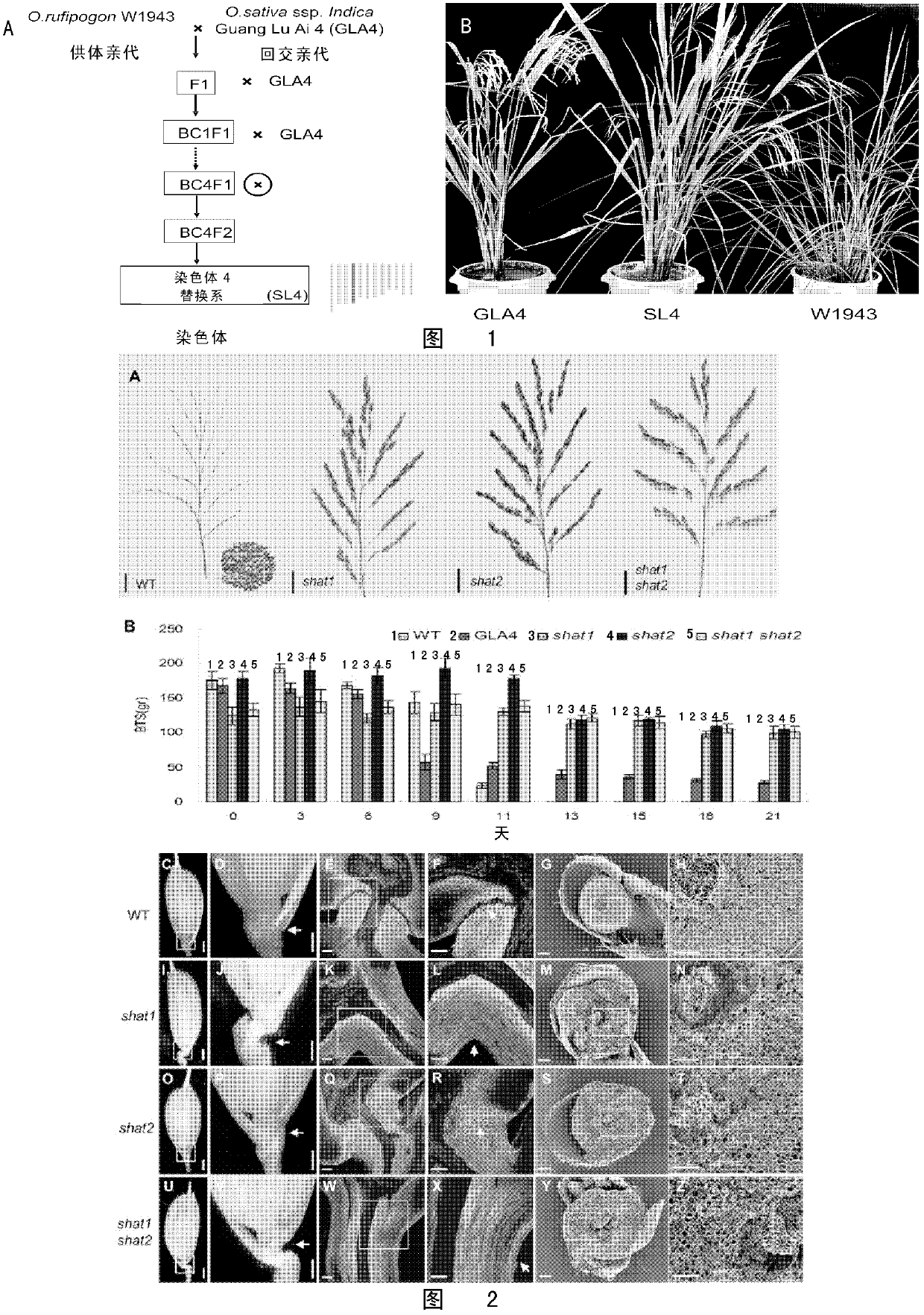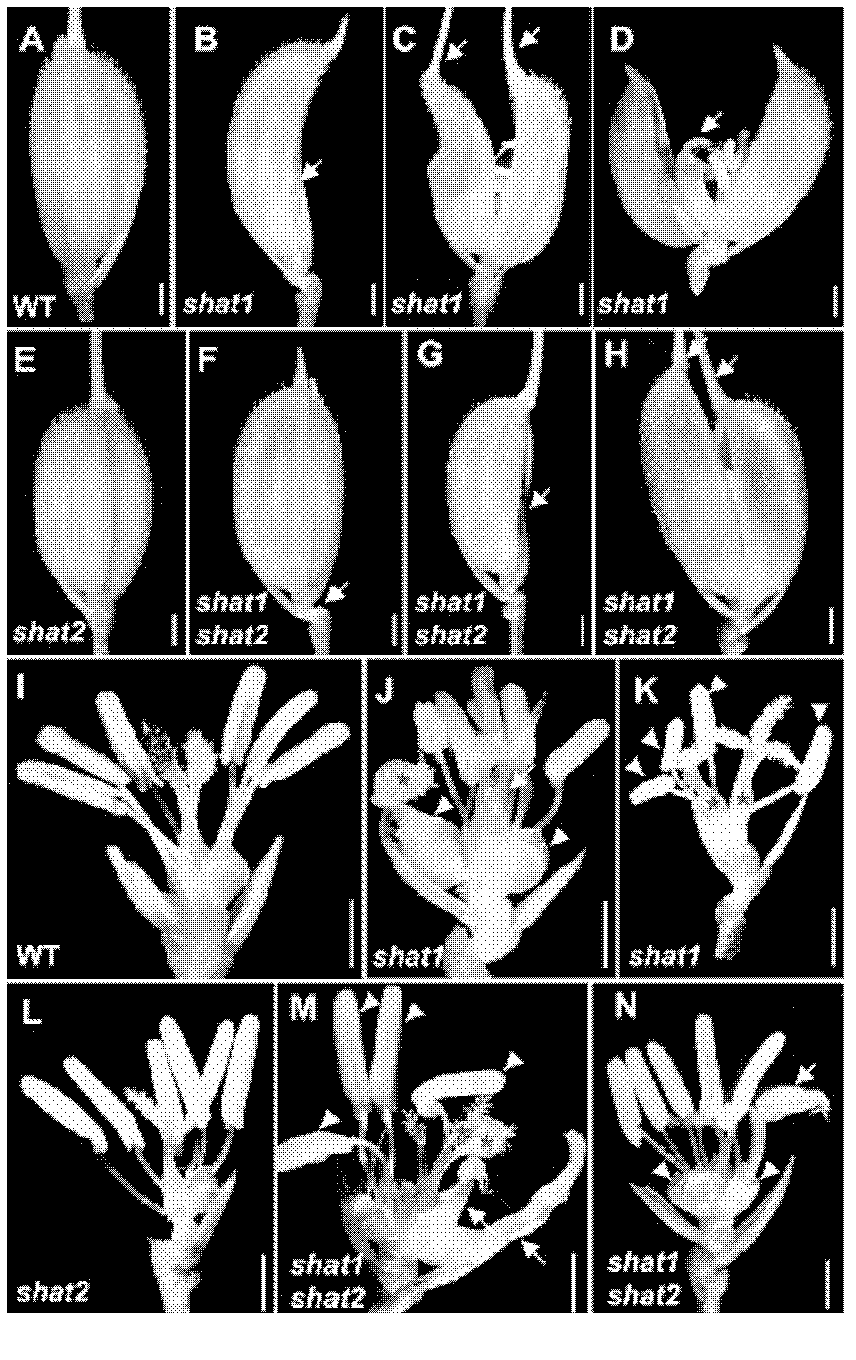Plant seed separation layer area developmental regulation gene and application thereof
A seed and delamination technology, applied in the fields of biotechnology and botany, can solve the problems of flower or fruit shedding, crop or fruit tree production reduction, etc.
- Summary
- Abstract
- Description
- Claims
- Application Information
AI Technical Summary
Problems solved by technology
Method used
Image
Examples
Embodiment approach
[0153] As an embodiment of the present invention, the gene encoding the SHAT1 protein is cloned into an appropriate vector by conventional methods, and the recombinant vector with the foreign gene is introduced into the plant cells that can express the SHAT1 protein , making the plant cell express SHAT1 protein. Plants overexpressing SHAT1 protein can be obtained by regenerating said plant cells into plants.
[0154] Preferably, a method for suppressing gramineous seed shattering comprises:
[0155] (s1) providing an Agrobacterium carrying an expression vector, the expression vector containing an interfering molecule of the SHAT1 gene (including but not limited to dsRNA, antisense nucleic acid, small interfering RNA, microRNA, or capable of expressing or forming the dsRNA, anti constructs of sense nucleic acid, small interfering RNA, microRNA);
[0156] (s2) contacting the plant cell, tissue or organ with the Agrobacterium in step (s1), so that the interfering molecule of th...
Embodiment 1
[0255] Example 1, isolation and phenotypic identification of shat1 and shat2 mutants
[0256] In order to study the grain shattering pathway, the inventors used the replacement line SL4 as the starting material, its fourth coloring was replaced by wild rice W1943, and the rest of the genetic background was indica rice Guangluai 4 (GLA4) ( figure 1 A-B).
[0257] SL4 exhibited extremely strong seed-shattering ability, which was due to the SH4 gene from wild rice on the one hand, and the seed-shattering gene qSH1 ( figure 2 A, WT). The inventors carried out cobalt 60 radioactive mutagenesis on SL4, from T 1 Plants without shattering were screened in the generation. The present inventor has isolated two extreme non-shattering mutants, named respectively as shattering abortion 1 (shat1) ( figure 2 A, second from left) and shattering abortion 2 (shat2) ( figure 2 A, third from left).
[0258] In addition to not shattering, shat1 also exhibited a series of abnormal floral o...
Embodiment 2
[0259] Embodiment 2, the disappearance of abscission layer is the reason that causes shat1 and shat2 mutants not to shatter
[0260] The non-shattering traits of shat1 and shat2 mutants were further detected by the Breaking Tensile Strength (BTS) tensile value at different developmental stages of seeds. The BTS pulling force value is negatively correlated with the seed shattering property, that is, the larger the pulling force value is, the harder it is for the seeds to shatter. During the first 6 days of flowering, there were no significant changes in the BTS values of different rice varieties. In wild-type SL4, pull force values decreased rapidly on day 11 after anthesis. On the 13th day after flowering, the BTS value was difficult to detect because the connection between the seed and the small branch was already very weak. On the 15th day after flowering, most of the wild-type seeds had fallen off automatically ( figure 2B). These changes were mainly caused by the ...
PUM
 Login to View More
Login to View More Abstract
Description
Claims
Application Information
 Login to View More
Login to View More - R&D
- Intellectual Property
- Life Sciences
- Materials
- Tech Scout
- Unparalleled Data Quality
- Higher Quality Content
- 60% Fewer Hallucinations
Browse by: Latest US Patents, China's latest patents, Technical Efficacy Thesaurus, Application Domain, Technology Topic, Popular Technical Reports.
© 2025 PatSnap. All rights reserved.Legal|Privacy policy|Modern Slavery Act Transparency Statement|Sitemap|About US| Contact US: help@patsnap.com



